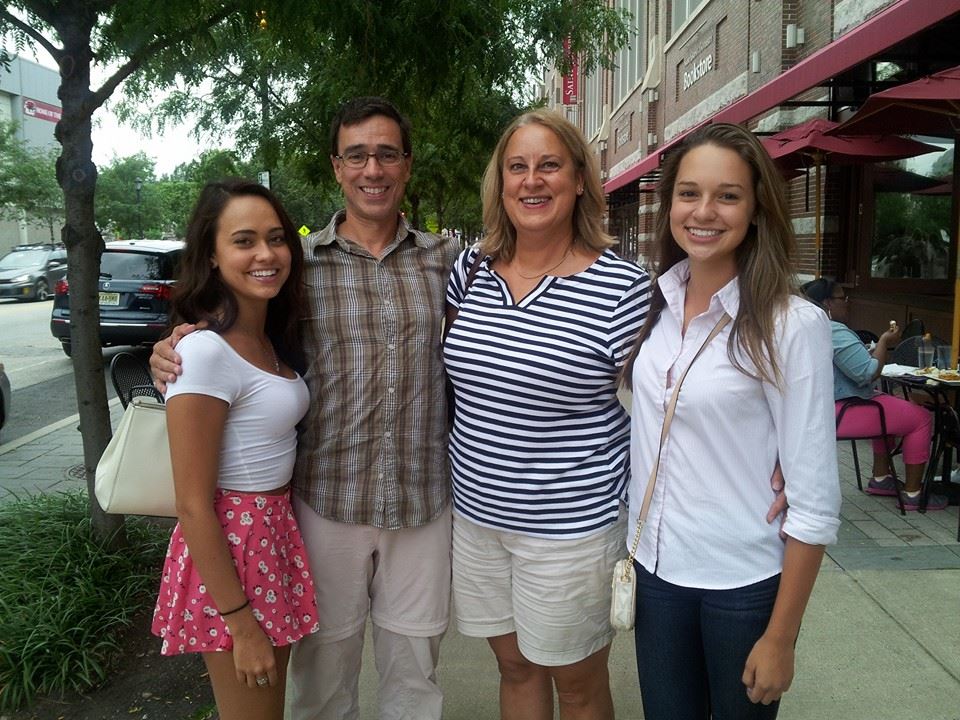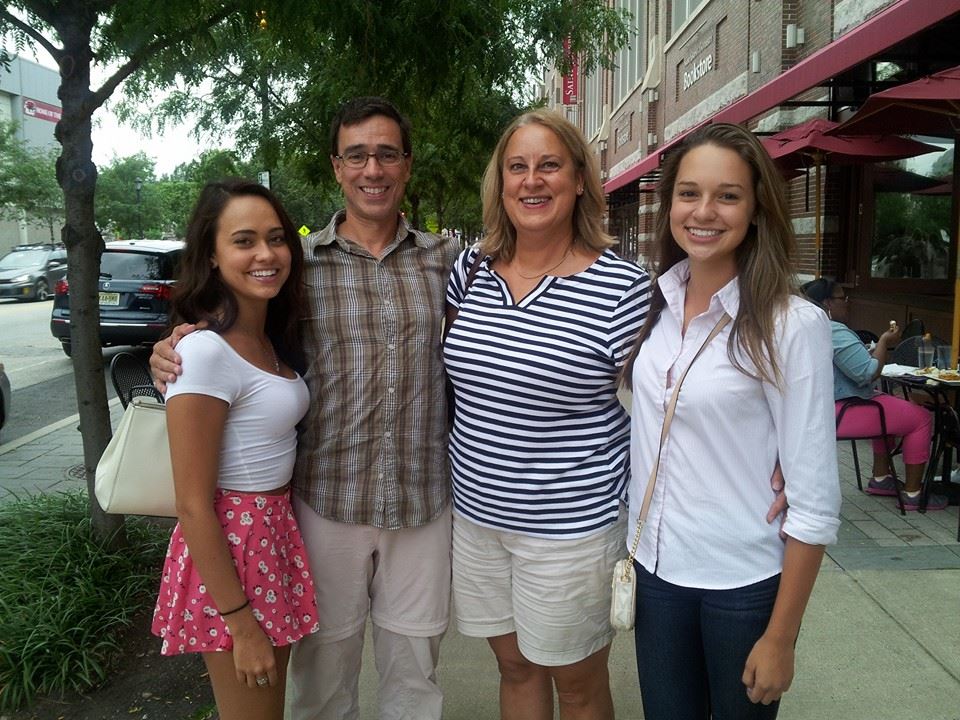
BRCA1 Mutations and Prophylactic Surgery – My Story
-
There is much to be said today about genetic testing and screening for ovarian cancer and prophylactic surgery in the case of BRCA1 mutations. But we need to say more. It can save a woman’s life. And I know because it probably saved mine.
My mother passed away from ovarian cancer in 1980, a year and a half after her diagnosis, and just 12 days after my 15th birthday. The GI workup by her family doctor for her complaint of feeling ‘bloated’ and having an enlarging abdomen proved negative and resulted in a diagnosis of general weight gain. (Yes, those classic vague symptoms….) A visit to a gynecologist for the same complaints brought on surgery and a diagnosis of stage 4 aggressive ovarian cancer at the young age of 52.

In 1996 and 1999 I had daughters of my own. I was vaguely aware that ovarian cancer could have a genetic connection, but not being a candidate for genetic testing by the standards at that time, I wanted to do all I could to make sure that I’d be here as long as possible for them. We never knew if my mom had the BRCA1 mutation or not. My maternal grandmother used to tell us that in the 1930s, when she was in her early 30s, her doctor sent her 3 hours away to the “Philadelphia hospital” where “I went in for an appendectomy and they gave me a hysterectomy.” Did they remove her ovaries and fallopian tubes too? Was she a BRCA1 mutation carrier? We’ll never know. But she did live to the ripe old age of 95.
Over the years I followed the recommendation for screening: CA-125 and trans-vaginal ultrasound. At the end of every yearly visit with my gynecologist, it was the same routine: “Any questions?” “Yes, can you please order the CA-125 and trans-vaginal ultrasound for me again this year?” At least I felt I was doing something and was not just a sitting duck, waiting for those non-discrete symptoms to appear. It was reassurance to me when I would get the call that both tests came back fine.
Fast forward to January of 2013. I received the news that my first cousin (maternal) was diagnosed with aggressive stage 4 ovarian cancer. She also tested positive for the BRCA1 mutation. That spring I went back to the Family Risk Assessment Program at Fox Chase Cancer Center and met with Kim Rainey, who was incredibly knowledgeable and compassionate. Immediately I was tested and was found to have the BRCA1 mutation with the same exact defect and location as my cousin. After years of wonder and worry and questions I finally had my answer, although it was not the one I was hoping for. But it was an answer. It gave me a sense of relief to know for sure. No more guessing and wondering if I was more at risk than other women. And most importantly it gave me more of a reason to look at doing something else to help my health – removal of my ovaries and fallopian tubes.
In late August of 2013 I returned to Fox Chase to meet with gynecologic surgical oncologist Gina Mantia-Smaldone, MD, who was very positive and reassuring about the whole procedure and the decision to remove these things that I really didn’t need anymore. I was thinking about December for surgery – you know, time off from work around the holidays, so why not do it then? When I brought this up, Dr. Mantia-Smaldone questioned why I would wait to remove these organs when clearly I was at a much higher risk for cancer. I couldn’t really argue with that. So surgery was scheduled for September 20th.
Friday, September 20th I had laparoscopic same-day surgery: a laparoscopic bilateral.
Salpingo-Oophorectomy, or in simple terms, removal of the ovaries and fallopian tubes. Everything went great and I was back on my feet the next day. When I returned to see Dr. Mantia-Smaldone for my follow-up visit I felt great, everything was going well. And then she told me that they found something in the right fallopian tube that was removed. Cancer. Wow. “In-situ serous carcinoma in the fallopian tube.” Cancer. Me? Cancer. Wow.
In the blink of an eye I found out that I was a cancer survivor without ever knowing I had it in the first place. Cancer. That dreaded word that always affects other people but not you. But not this time. I was saddened to hear it because I expected good news. But as Dr. Mantia-Smaldone pointed out to me, it really was good news. The good news was that I had the surgery and it was removed. And it was caught so incredibly early – before it had a chance to develop into something more destructive, which it most likely would have. It was a 180 degree turn from how I first saw things, but I quickly came to realize that she was exactly right. But still it was cancer. And it was me.
Next up was the evaluation of what the next course of action should be: surveillance, chemo, or more surgery. Due to the fact that diagnosis of in situ fallopian tube cancer is rare, there isn’t a lot of research available to determine what the best go-forward strategy should be. Dr. Mantia-Smaldone presented my case at the Tumor Board at Fox Chase and then at an ovarian cancer conference with many notable experts to gather opinions to help make a recommendation and the decision on the next steps. Talk about a second opinion! Based on all of the evidence and collaboration with her colleagues, we decided to do additional surgery to insure that there was no notable cancer present and to remove the other internal parts that were no longer of use to me. Staging surgery, as if I had been diagnosed with ovarian cancer, was the course we decided to follow.
On October 18th I had laparoscopic surgery to remove my uterus, omentum, some pelvic lymph nodes and to do samplings of the lining of my peritoneum. This time the news for sure was all good – everything came back negative! My recovery went well even though I had to give myself those pesky blood thinner injections. But it was all for the good. Fortunately for me I don’t have a tiny belly.
So now I’m on a maintenance course of visits and exams every 3 months accompanied by a CA-125 level. Simple stuff. And I count my blessings every day that my guardian angel was watching over me. And you can guess who I think she is.
I have two older sisters who both had their ovaries removed when they were in their early 40s. Recent genetic testing revealed that one has the same BRCA1 mutation as the rest of us but the other has no mutation. My daughters are 18 and 15 and are very well aware of what this means to them in the future. Hopefully this knowledge will help them to live long lives to the fullest. And hopefully they’ll test negative one day for the mutation. But if not, we know what to do.
Having genetic testing done gave me the knowledge and the opportunity to do something to help myself and my family and to keep me here with them. It was a bit scary at times, but it was all for the best. If I had to do it over again, I’d do testing sooner and have my ovaries removed earlier than 48. I was lucky, fortunate and forever grateful.
For anyone facing the decision of testing or surgery, I cannot encourage you enough to do it. It may very well be the thing that saves your life. It’s not that hard. I share my story in the hope that I can help someone else to be a cancer survivor too. Do it for you. Do it for your family. Do it for somebody. Just do it.
Read Dr. Mantia-Smaldone’s blog on the importance of detecting ovarian cancer early.
